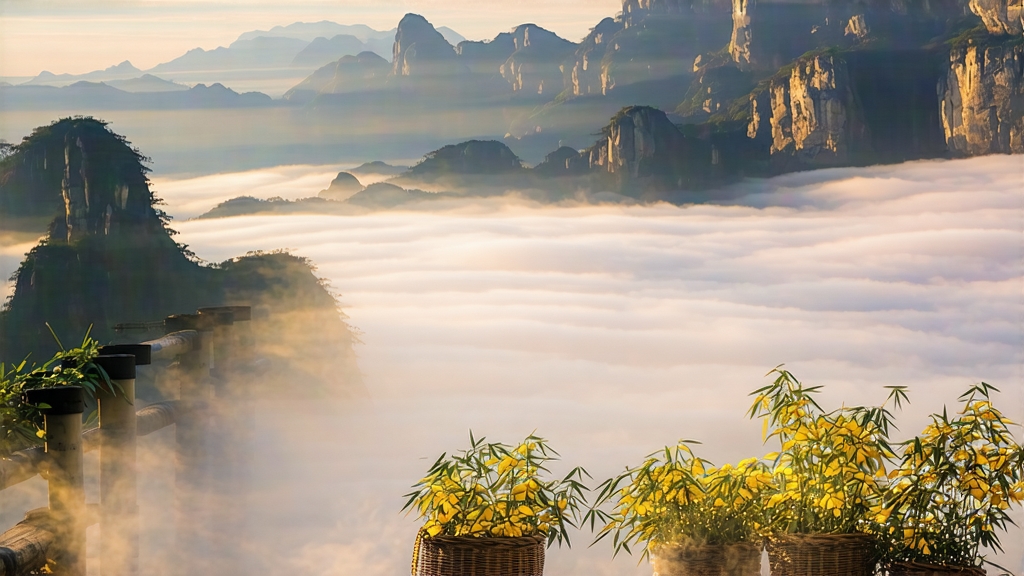
Tucked high in the mist-veiled Dabie Mountains of western Anhui Province, a tea so rare that even many Chinese connoisseurs have never tasted it quietly preserves one of the most intricate crafts in the entire camellia-sinensis universe. Huoshan Huangya—literally “Yellow Buds of Huoshan”—is the living fossil of China’s yellow-tea family, a style that once commanded the same reverence as Dragon-Well or Bi-Luo-Chun during the Ming and early Qing dynasties. Today, with annual production hovering below three metric tons, each leaf is a time capsule of imperial taste, mountain terroir and a “sweating” process so delicate that a single impatient hour can turn potential gold into merely mediocre green.
History: from imperial tribute to near extinction
The first written record appears in 1602, when the Huoshan county gazetteer lists “huang cha” among items levied as tribute. By the Kangxi reign (1662-1722) the tea had earned the nickname “one tael of gold, one tael of tea” inside the Forbidden City. Caravans left the mountain in late April, reaching Beijing in ten days via post-horse relay so that the emperor could taste the spring’s first “yellow” before the Dragon-Boat Festival. The 19th century brought turmoil: the Taiping rebellion severed trade routes, and British Indian black teas captured the court’s fancy. By 1949 only three ageing masters still knew the full men-huang (sealed yellowing) protocol. A state-led revival in 1972 saved the cultivar, yet true Huoshan Huangya remains micro-batch, harvested exclusively from a 600-hectare core zone above 500 m in the Jinji mountain cluster.
Terroir & cultivar: why the mountain gives yellow
The Dabie range acts as a climatic gate, trapping humid air from the Yangtze floodplain and forcing it upward; average fog cover exceeds 220 days a year. The local small-leaf landrace, dubbed “Huoshan early-sprout,” has evolved unusually high levels of glutamic acid and a low catechin-to-polyphenol ratio, precursors to the honeyed umami later coaxed out by yellowing. Soils are Phyllite-derived, slightly acidic (pH 5.2) and laced with selenium leached from ancient granite intrusions—trace elements that tighten the bud’s cell walls and slow oxidation, buying the processor precious hours during the critical sweating stage.
Plucking calendar: the three golden thresholds
Only the spear-shaped bud plus its first unfolding leaf are taken, and only for ten mornings after Qingming (early April) when the bud length reaches 15–20 mm. Workers wear thin cotton gloves to avoid fingerprint bruises; baskets are lined with fresh bamboo leaves to buffer heat. A seasoned picker gathers barely 400 g per hour, meaning a finished kilo of dry Huangya represents 32,000 individual plucks.
Craft: the art of “men huang” – letting the leaf suffocate in its own warmth
Yellow tea’s identity rests on an extra micro-fermentation inserted between kill-green and shaping. In Huoshan this step is called men huang—literally “sealed yellowing”—and it is danced across three nights.
Day 1, late afternoon: sha qing (kill-green)
Buds are tumble-tossed in bamboo-drum roasters at 140 °C for 3.5 minutes, just enough to denature polyphenol oxidase while preserving a 12 % residual moisture. The leaves emerge jade-green at the edges, still pearl-white at the stem.
Night 1: primary men huang
The warm leaf is immediately piled 15 cm deep inside square cedar boxes lined with wet cotton cloth. Temperature is allowed to climb to 38 °C under its own respiration; every 45 minutes the pile is gently turned to redistribute heat and CO₂. During this 8-hour rest chlorophyll slowly degrades into pheophytin, catechins dimerise into theaflavins, and a faint maillard note of toasted pumpkin seed appears.
Day 2: rough rolling & second roasting
A 15-minute light rolling sets the curl, followed by a 60 °C second roast that reduces moisture to 8 %. The leaf now shows the first true yellow streaks along the central vein.
Night 2: secondary men huang
P